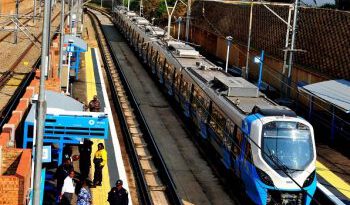Gautrain expansion on the cards
The Gautrain Management Agency is planning to spend up to R2 billion to acquire second hand additional rolling stock from the United Kingdom to deal with the capacity constraints on the high-speed train network.
Jack van der Merwe, chief executive of the Gautrain Management Agency, says a team has just returned from the UK where they identified three rolling stock companies they are now negotiating with.
Speaking at the Southern African Transport Conference this week, Van der Merwe said the agency is looking at bringing in between 18 and 35 coaches for the Gautrain. They will most probably arrive in South Africa within the next 18 months.
Read: Commuting your way to happiness
Van der Merwe says loan funding for the acquisition of rolling stock has been obtained from the Development Bank of Southern Africa (DBSA) and that the project will cost a maximum of R2 billion.
“You will be quite surprised to see what rolling stock we are going to run on the system. You all know it and have driven in it. I’m not going to spoil the surprise.
“We are going to run the new additional rolling stock from the airport on the east-west line and then all the existing trains will run on the north-south line.”
Gautrain 2
Van der Merwe also provided an update of Gautrain 2, the next phase of the project.
He says the planned network for Gautrain 2 is from Mamelodi in the east of Pretoria to Jabulani in the west of Soweto, from Lanseria to Little Falls and Cosmo into Randburg and Marlboro, and from OR Tambo International Airport to Boksburg.
It will add 150km of railway line and another 19 stations to the network, with the first phase planned to be from Lanseria to Little Falls into Randburg and Marlboro.
He says Gautrain 2 is a strategic infrastructure project in the National Development Plan.
“If the president and cabinet give money to the NDP and start funding it, I expect us to start construction four years from now.”
Read: Government to pay up R1.2bn in Gautrain settlement
Van der Merwe says the public-private partnership (PPP) feasibility for Gautrain 2 has been finalised and the agency has applied to National Treasury for authorisation for the project.
Private sector
He says Gautrain 1 has private sector debt of about 12%, with the balance comprising provincial borrowings and provincial budget allocations via national government.
The agency wants to increase private sector funding to 33% with Gautrain 2, which, if built, will create 210 000 jobs.
He says revenue generated by Gautrain 1 in the past three years covered between 90% and 105% of the system’s operating costs.
The need for Gautrain 2 was prompted by the estimated growth in Gauteng’s population, which is expected to increase 48% to 19.1 million people by 2037 (from 12.9 million in 2014).
He says the agency is predicting that the low income group in Gauteng will reduce to 43% in 2037 from 52% in 2014, with the high and medium income groups accounting for about 57% of the total population in the province in 2037.
Changing travel demands
“This will create a different demand for travel. The first thing people want to do when they become financially independent is that they want to buy a car.
“The only thing that gives me hope is that millennials do not want to buy a car but want to sit on public transport and play with their cellphones.”
Van der Merwe says the number of workers in the province is estimated to increase by 44% to 9.2 million 2037 (from 6.3 million in 2014), which would mean 18 million home-to-work and work-to-home trips daily.
The current car population would grow significantly from 3.9 million in 2014 to 6.6 million in 2037, with ownership of cars increasing from 300 per 1 000 people to 450 per 1 000.
Van der Merwe says that in 2000, 51% of people in Gauteng used public transport and 49% private transport, but in the past 10 years the use of private transport has gone up to 56%.
“This is very worrying and a trend we have to stop and turnaround. In Tokyo, almost 90% of all trips made are with public transport,” he said.
The weighted average speed on Gauteng highways would decrease to 10km an hour because of congestion.
“You can work out that if you live in Pretoria or Johannesburg, which are 50km apart, that it will take you five hours. What is interesting is that in London at the turn of the century when they used horse-drawn carriages, the average speed was 15km an hour.”
Source: moneyweb.co.za


